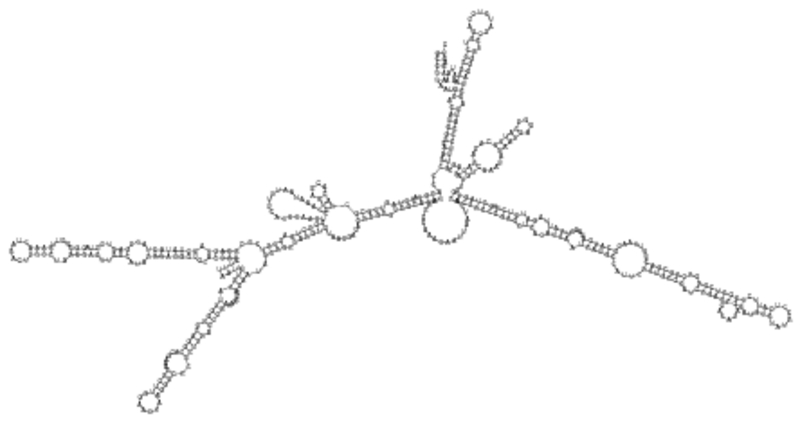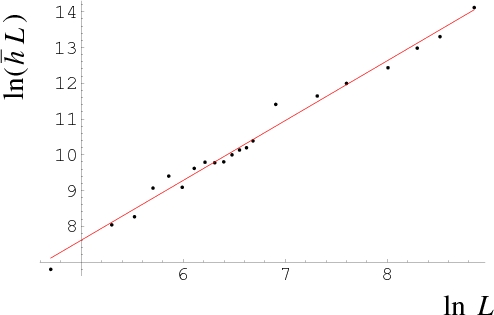Research Highlight: RNA folding
 GCCUUAAUGCACAUGGGCAAGCCCACGUAGCUAGUCGCGCGACACCAGUCCCAAAUAAUGUUCACCCAACUCGCCUGACCGUCC
CGCAGUAGCUAUACUACCGACUCCUACGCGGUUGAAACUAGACUUUUCUAGCGAGCUGUCAUAGGUAUGGUGCACUGUCUUUAA
UUUUGUAUUGGGCCAGGCACGAAAGGCUUGGAAGUAAGGCCCCGCUUGACCCGAGAGGUGACAAUAGCGGCCAGGUGUAACGAU
ACGCGGGUGGCACGUACCCCAAACAAUUAAUCACACUGCCCGGGCUCACAUUAAUCAUGCCAUUCGUUGCCGAUCCGACCCAUA
UAGGAUGUGUAUGCCUCAUUCCCGGUCGGGGCGGCGACUGUUAACGCAUGAGAACUGAUUAGAUCUCGUGGUAGUGCUUGUCAA
AUAGAAUGAGGCCAUUCCACAGACAUAGCGUUUCCCAUGAGCUAGGGGUCCCAUGUCCAGGUCCCCUAAAUAAAAGAGUCUCAC
GCCUUAAUGCACAUGGGCAAGCCCACGUAGCUAGUCGCGCGACACCAGUCCCAAAUAAUGUUCACCCAACUCGCCUGACCGUCC
CGCAGUAGCUAUACUACCGACUCCUACGCGGUUGAAACUAGACUUUUCUAGCGAGCUGUCAUAGGUAUGGUGCACUGUCUUUAA
UUUUGUAUUGGGCCAGGCACGAAAGGCUUGGAAGUAAGGCCCCGCUUGACCCGAGAGGUGACAAUAGCGGCCAGGUGUAACGAU
ACGCGGGUGGCACGUACCCCAAACAAUUAAUCACACUGCCCGGGCUCACAUUAAUCAUGCCAUUCGUUGCCGAUCCGACCCAUA
UAGGAUGUGUAUGCCUCAUUCCCGGUCGGGGCGGCGACUGUUAACGCAUGAGAACUGAUUAGAUCUCGUGGUAGUGCUUGUCAA
AUAGAAUGAGGCCAUUCCACAGACAUAGCGUUUCCCAUGAGCUAGGGGUCCCAUGUCCAGGUCCCCUAAAUAAAAGAGUCUCAC
Experiments show, that complementary Watson-Crick bases like to pair. In contrast to DNA, RNA molecules have to fold back onto themselves; there is no complementary strand.
Given a random sequence as above, how will the RNA molecule fold? The picture shows the answer given by ViennaRNA.
As physicists, we want to know the statistical properties of large systems, especially those properties independent of the specific microscopic details, as e.g. the sequence. What would happen for a random sequence?

 The first task is to find an appropriate measurable quantity. Let us
define the height of a base as the number of bonds, i.e. base pairs (represented by dashed lines above)
one has to cross in order to arrive at a given base. This is
illustrated in the left figure above: There the base to which the
arrow is pointing has height 5. We then ask: How does the average
height of a molecule scale with the size of the molecule? Somehow
surprisingly, we find that the averaged height ⟨h⟩
scales with the size of the system as ⟨h⟩
∼ Lζ.
How does ζ depend on the temperature or the degree
of disorder? At high temperatures, it is easy to show that
ζ = 1/2. At low
temperatures and for the 21 samples we used to create the above plot, we find
that ζ ≈ 0.67.
Serious numerical simulations by Bundschuh and Hwa [PRE
65 (2002) 031903] and by Krzakala, Mézard and Müller
[Europhys. Lett. 57 (2002) 752] confirm that at low
temperatures, i.e. considering the optimal fold, ζ
≈ 2/3.
It is an outstanding problem to derive this result analytically, and
not only to describe the phase transition between the two phases, but
even to establish its existence! Our field theory [1,2] is the first
theory to predict such a transition, with an exponent ζ ≈
0.64. It also predicts that in the low-temperature phase the exponent
is the same as at the transition, since already at the latter a single
ground-state dominates the partition function. In view of the
numerical results, this is encouraging. It remains to test at the
transition non-trivial predictions of the field theory, as e.g. the
scaling of the common paring probability of two molecules, compared to
that of a single one.
The first task is to find an appropriate measurable quantity. Let us
define the height of a base as the number of bonds, i.e. base pairs (represented by dashed lines above)
one has to cross in order to arrive at a given base. This is
illustrated in the left figure above: There the base to which the
arrow is pointing has height 5. We then ask: How does the average
height of a molecule scale with the size of the molecule? Somehow
surprisingly, we find that the averaged height ⟨h⟩
scales with the size of the system as ⟨h⟩
∼ Lζ.
How does ζ depend on the temperature or the degree
of disorder? At high temperatures, it is easy to show that
ζ = 1/2. At low
temperatures and for the 21 samples we used to create the above plot, we find
that ζ ≈ 0.67.
Serious numerical simulations by Bundschuh and Hwa [PRE
65 (2002) 031903] and by Krzakala, Mézard and Müller
[Europhys. Lett. 57 (2002) 752] confirm that at low
temperatures, i.e. considering the optimal fold, ζ
≈ 2/3.
It is an outstanding problem to derive this result analytically, and
not only to describe the phase transition between the two phases, but
even to establish its existence! Our field theory [1,2] is the first
theory to predict such a transition, with an exponent ζ ≈
0.64. It also predicts that in the low-temperature phase the exponent
is the same as at the transition, since already at the latter a single
ground-state dominates the partition function. In view of the
numerical results, this is encouraging. It remains to test at the
transition non-trivial predictions of the field theory, as e.g. the
scaling of the common paring probability of two molecules, compared to
that of a single one.
We have also studied the RNA denaturation transition, when pulling at the two ends of the molecule [3]. It would be interesting to measure this in an experiment. Finally, we have studied a hierarchical model, and found analytically the non-trivial exponent ζ = (√17 - 3)/2, as well as the scaling functions [4].
[1] The Freezing of Random RNA
Michael Lässig, Kay Jörg Wiese
q-bio.BM/0511032 [abs] [pdf]
Phys. Rev. Lett. 96 (2006) 228101
[pdf]
[2] Systematic Field Theory of the RNA Glass Transition
François David, Kay Jörg Wiese
q-bio.BM/0607044 [abs] [pdf]
Phys. Rev. Lett. 98 (2007) 128102 [pdf]
Selected for the April 1, 2007 issue of Virtual Journal of Biological Physics Research
[3] Random RNA under tension
François David, Christian Hagendorf, Kay Jörg Wiese
q-bio.BM/0701049, LPTENS 07/04 [abs] [pdf]
EPL 78 (2007) 68003 [pdf]
[4] A growth model for RNA secondary structures
François David, Christian Hagendorf, Kay Jörg Wiese
arXiv:0711.3421 (q-bio.BM), LPTENS 07/54 [abs] [pdf]
J. Stat. Mech. (2008) P04008 [pdf]
Copyright (C) by Kay Wiese. Last edited June 13, 2008.



